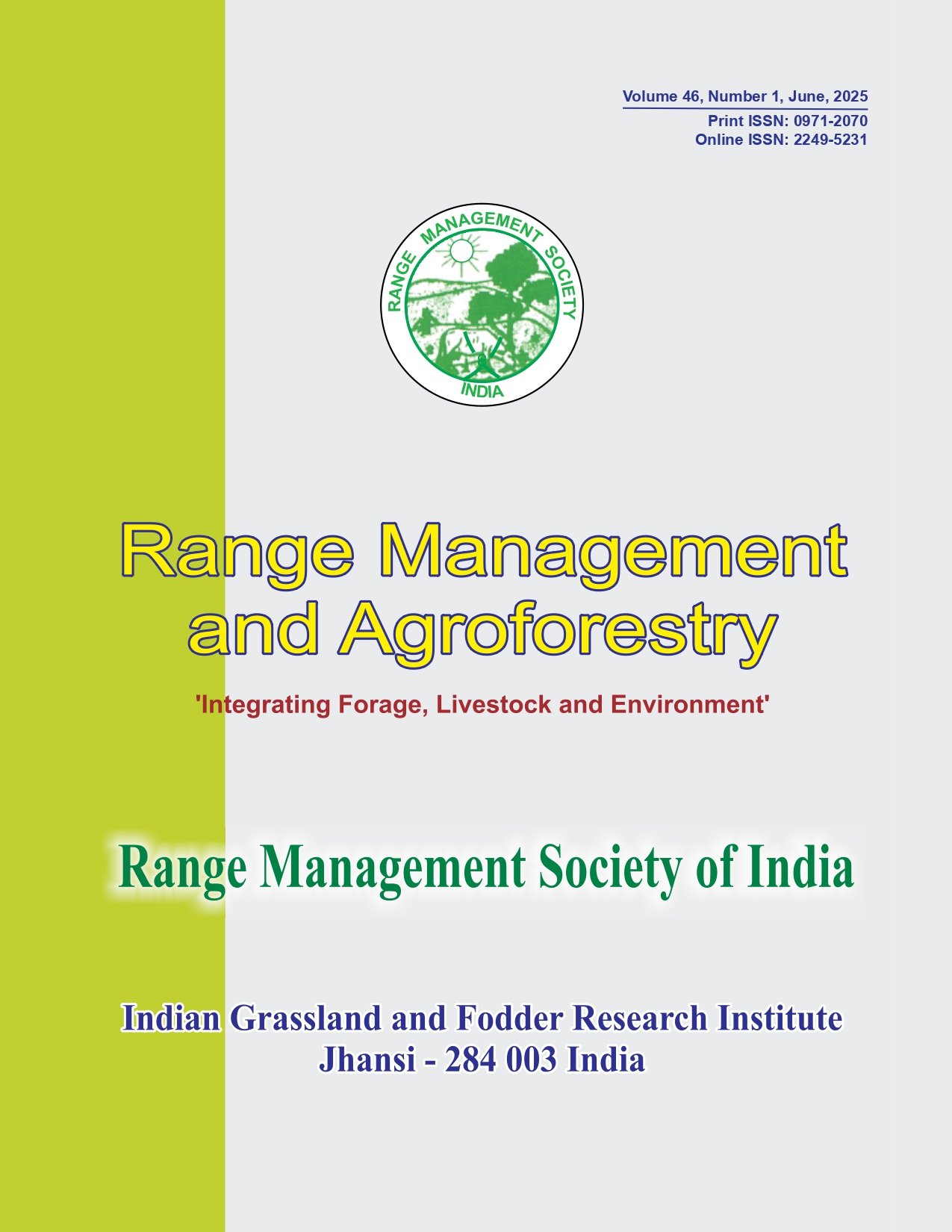The dependence of tribal community on forest resources for household fodder security in Gurez Himalaya of Kashmir
DOI:
https://doi.org/10.59515/rma.2025.v46.i1.06Keywords:
Forest dependence, fodder security, Shina tribe, Gurez, Kashmir, HimalayaAbstract
The study investigated dependence on forests for fodder security, the economic valuation and socio-economic determinants of fodder extraction in the Gurez Himalaya. Multi-stage random sampling technique was employed to select the sub-divisions (03), villages (18) and households (337). Data were collected using structured interviews, non-participant observation, focus group discussions (FGDs) and rapid market assessments (RMA). Results revealed that the total collection of green forest fodder was 1577.75 tonnes/year @ 4.68 tonnes/household/year, of which 1290.59 tonnes/year were consumed for subsistence and 287.15 tonnes/year were sold for cash income. The economic value of the fodder extracted from forests was Rs 12622000/-year @ Rs 37454/-household/year. It included Rs 10324796/-year as subsistence and Rs 2297204/-year as cash income. The forest dependence index (FDI) was intermediate (mean=0.348, SD=0.155) while the relative forest income (RFI) was low (mean=0.074, SD=0.070). Socio-economic variables such as education, family size, family labour, herd size, on-farm income, off-farm income, land holding, wealth status and annual income had significant effect on the forest fodder dependence.
Downloads
Downloads
Published
How to Cite
Issue
Section
License
Copyright (c) 2025 M.A. Islam, Ummar Atta, A.A. Wani, A.A. Gatoo, Murtaza Shah, K.A. Sofi, G.M. Bhat, A.A. Parrey

This work is licensed under a Creative Commons Attribution-ShareAlike 4.0 International License.







